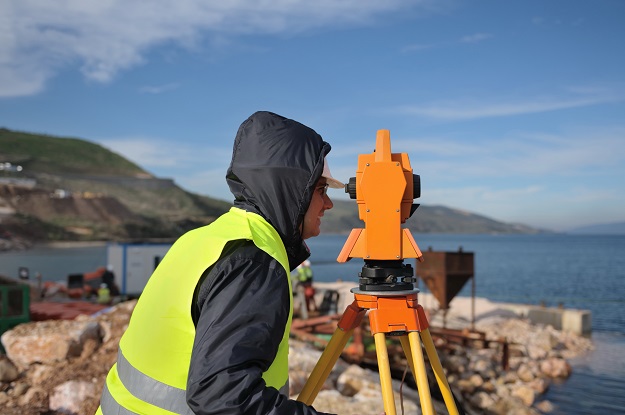
Image © iStockphoto/SB-8NIHAT
The government acknowledges a shortage of surveying and spatial professionals, but more needs to be done to solve the problem.
By Jonathan Nally
Canberra has moved to address the shortage of skilled professionals in the surveying and geospatial fields. In June the federal government added surveyors, cartographers and other spatial scientists to the Priority Migration Skilled Occupation List (PMSOL).
The PMSOL is a list of skilled occupations that the government considers are needed to help Australia recover from the economic effects of COVID-19.
A listing on the PMSOL means that employer sponsored nomination and visa applications for those categories will be given priority processing.
The Minister for Immigration, Citizenship, Migrant Services and Multicultural Affairs, Alex Hawke, said the government had consulted widely with industry and “received valuable feedback from Australian business stakeholders on critical skill vacancies, which has been considered together with data from the National Skills Commission…”
The PMSOL list is a temporary measure introduced in September last year, and does come with some strings attached. For instance, during the current COVID situation, temporary visa holders still have to obtain a travel exemption before coming to Australia
The move has been welcomed by surveying and geospatial industry, but it doesn’t plug all the gaps and is not a long-term solution to Australia’s critical shortage of skilled professionals.
For instance, surveyors — Australian and New Zealand Standard Classification of Occupations (ANZSCO) 232212 — are in currently high demand. But despite several ongoing initiatives, such as the Surveying Taskforce, Life Without Limits, Destination Spatial and Get Kids into Survey, “we as an industry seem to be making little progress in attracting more young people to enrol in surveying courses,” said Tony Wheeler, CEO of the Surveying & Spatial Sciences Institute (SSSI).
There is “pressure on the universities and TAFES to maintain their funding for surveying related courses, and yet we have seen the number of courses on offer nationally decrease,” he added. “At universities, all schools within faculties around the country have lost their independent status and become integrated into schools of other disciplines.”
The government lists cartographers (ANZSCO 232213) and other spatial scientists (ANZSCO 232214) as not being in shortage but subject to strong future demand. “The use of quality location data and Earth observation imagery has increased dramatically over the last decade and will continue to increase even more rapidly in the future decades,” said Wheeler.
Hydrography is a particular problem. According to the government, there is currently no shortage of hydrographers (ANZSCO 311415) and only moderate future demand. But this does not gel with the chronic global shortage of hydrographic surveyors, which in Australia has been exacerbated by the HydroScheme Industry Partnership Program (HIPP).
Under HIPP, the Department of Defence and industry are to deliver a $150 million national program investment over five years to have Australia’s Exclusive Economic Zone (approximately 10 million square kilometre) covered by high-quality bathymetry by 2050.
With 98% of all Australia’s trade carried by sea, ongoing hydrographic efforts clearly are critical to the national economy. Ports and harbours need to be continually surveyed and those surveys need to be signed off by certified hydrographic surveyors.
HIPP’s goals cannot be achieved with current efforts and methodologies, therefore more emphasis must be put into training and development to build this capacity within Australia. That’s why one of its aims is to build capacity in the nation’s hydrographic industry.
Yet hydrography is not taught to an adequate level in university or TAFE surveying courses, resulting in surveying graduates with little-to-no hydrographic training or knowledge. It can take five to 10 years post-graduation to train to become a certified hydrographic surveyor.
HIPP has certainly increased the demand for hydrographic surveyors, in particular certified hydrographic surveyors. But ironically it has put pressure on smaller hydrographic companies and ports, which are losing surveyors to fill the gaps on HIPP projects.
Overall, says Wheeler, “a lot more needs to be done by the industry, including an industry wide strategy” to encourage students to enrol in surveying and spatial courses.
This article was first published in Issue 114 (Aug/Sep 2021) of Position magazine.
Stay up to date by getting stories like this delivered to your inbox.
Sign up to receive our free weekly Spatial Source newsletter.












